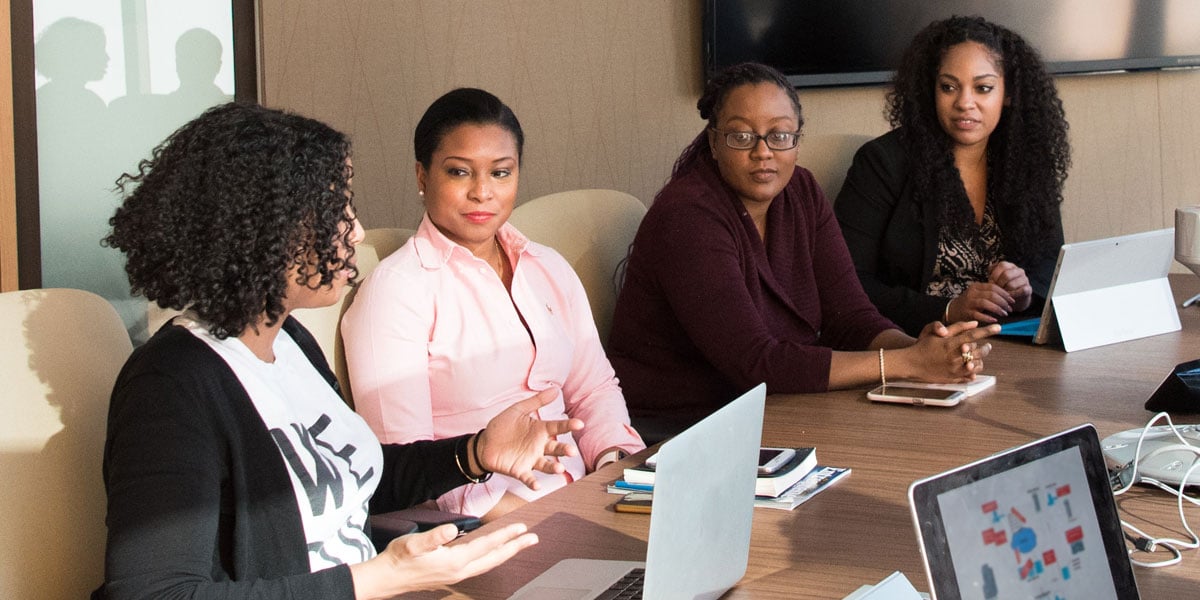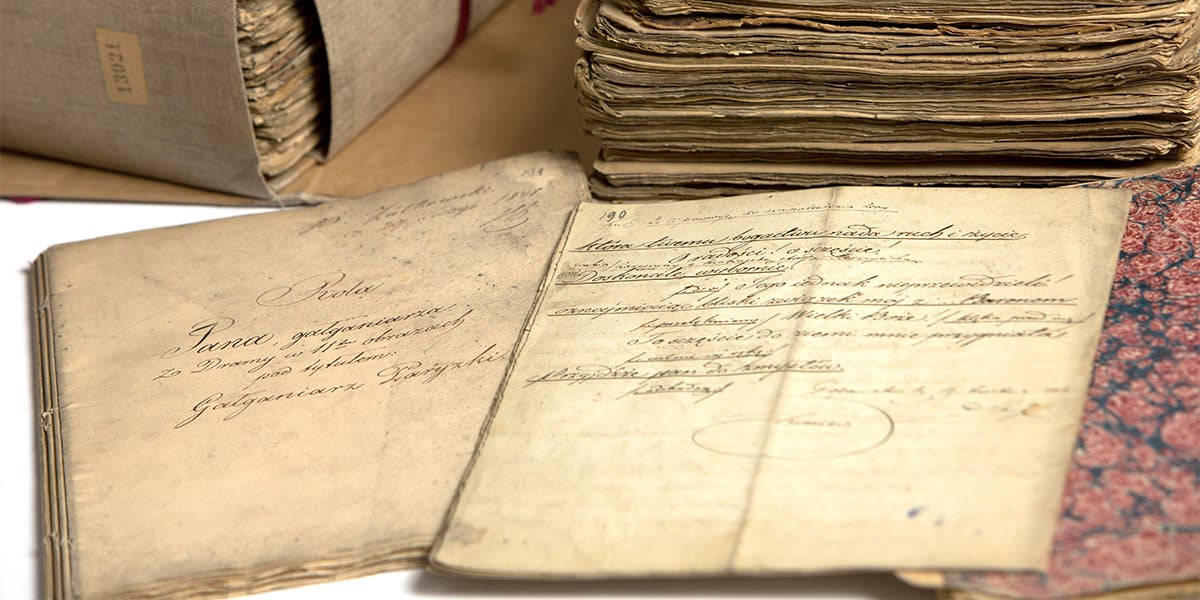A clear understanding of the scope is the basis on which successful archival projects are built. Without it, archivists will struggle to deliver a project well.
We've Moved!
Think Clearly has a new home! Click here to see our latest posts.
*If there’s older content you’d like to catch up on, you can browse right where you are, until Friday, April 5th.
We know it takes a minute to get used to change!
Topics: Professional Development, Strategy, Archives
There are many ways to nurture an organizational knowledge-sharing culture, including embracing “Working Out Loud”. Bryce Williams defines Working Out Loud (WOL) as Observable Work (creating, modifying, and storing your work in places where others can see it, follow it, and contribute to it in process) + Narrating Your Work (writing about what you are doing in an open way for those interested to find and follow).
Topics: Knowledge Management, KM, Strategy
On-Site or Off-Site Storage – Part 4: Inclusion in Security and Disaster Prevention and Planning
“Out of Sight” should not mean “Out of Mind.” The worst happens when we least expect it. While it’s great that library items are stored in safe locations, it’s essential that these facilities be included in security, risk management, and disaster response plans.
Topics: Professional Development, Special Libraries, Strategy
Your organization’s IT department is a key functional partner. You will need to work with them to plan and implement technology projects. Here are detailed suggestions for how to best do this.
Topics: Knowledge Management, KM, Strategy
During the Civil Rights era of the 1960s and 1970s a cultural and legislative transformation occurred that began the effort to protect minorities and persons with disabilities against discrimination, and advocate for their equal right to participate in all aspects of life. There is still much to be done in both the United States and Canada, and the museum world is not exempt from this work.
Topics: Museums, Strategy, Collections Management
Archivists can use several elicitation techniques to gather requirements for their projects. These methods, ranging from document analysis to in-depth interviews, provide ideas for needed projects.
Topics: Strategy, Digital Archives, Archives
On September 2, 2018 the Museu Nacional (Brazil’s National Museum) experienced a terrible fire that led to an estimated loss of more than 20 million specimens and artifacts – approximately 90% of its collection.
Topics: Museums, Strategy, Collections Management
Requirements for archival projects are different from goals and objectives. Requirements specify what the deliverables of the completed project must be. Requirements define the final product, service, or result. These are statements of quantitative criteria, each of which provides a measure of one or more of the project’s critical success factors. You can visualize the requirements when you consider the current condition of an organization and then examine its future state once the project is completed.
Topics: Professional Development, Strategy, Archives
The Value of Cultural Heritage Experiences in the Museum
As museums have evolved, so have their exhibits. We’ve seen displays go from wax model recreations of Neanderthals, miniaturized versions of places, touch and play set ups to interactive digital panels, integrated multi-media, and even augmented reality (AR) and virtual reality (VR) set ups that enhance the exhibit experience.
Topics: Museums, Strategy, Collections Management
On-Site or Off-Site Storage – Part 3: Preservation and Access
Off-site and remote storage facilities can serve as havens for items that have long-term preservation needs. One of the triggers for moving materials to off-site and remote storage facilities is an increased need for preservation. Items that are fragile, damaged, or need long-term storage in a stable environment may be candidates for transfer to off-site storage facilities.
Topics: Strategy, Collections Management, Special Librarianship
Goals and objectives are instrumental in strategic planning for archives because they turn the project’s vision into measurable targets. Goals are the ends towards which a project is directed; objectives are more detailed than goals and explain how goals will be accomplished. With both in hand, archivists build and support the vision for what they wish to achieve with their projects.
Topics: Professional Development, Strategy, Digital Archives, Archives
Storing records, collections, and objects in off-site and remote storage facilities limits access to original materials. Decisions about storage affect how your staff and clientele work and their ability to access information in a timely manner. The best storage solutions minimize disruption of service and frustration.
Topics: Strategy, Collections Management, Special Librarianship
The most vital aspect of managing a successful archival project is identifying the right problem to be solved. In the cultural heritage sector, too many excellent exciting projects exist, but limited resources hamper seeing them to fruition. Archivists should prioritize projects that add value to the organization.
Topics: Professional Development, Strategy, Archives
Who Owns Digital Culture? An Important Question Museums Must Consider
The ability to digitize and publish collections online through a collections management system has helped reinvent how museums present their holdings. In the beginning, there was resistance to publishing digital images of collection objects online. This was due to a (now proven false) concern that people would no longer visit the museum if they could view collections online.
Topics: Museums, Strategy, Collections Management
On-site or Off-site Storage – Part 1: Implications of Storing Materials Off-site
Our esteemed guest blogger, Miriam Kahn, has used municipal and county courthouses and record centers to compile legal, real estate and genealogical information for 20 years. She experienced the shift from print to digital, from photocopies to microfilm to digital, and from paper deliverables to digital delivery—and is very familiar with issues surrounding long-term storage of paper, audiovisual, and digital materials. We asked Miriam to bring her years of insight as an information professional and free-lance researcher to a blog series on the merits and challenges of off-site and remote storage.
Topics: Strategy, Collections Management, Special Librarianship
The End of Net Neutrality & The Museum Digital Visitor
In the United States, the Federal Communications Commission (FCC) has officially ended net neutrality and internet service providers (ISPs) are no longer regulated in their provision of internet usage. The end of net neutrality has many profound implications, and when you consider what it might mean for museums and other cultural institutions, the repercussions can be catastrophic.
The Future of Augmented and Virtual Reality (AR & VR) in Museums
It is undeniable that technology has a growing presence within the museum sphere. At first, audio-visual technology was harnessed by the museum to augment the museum’s exhibits and provide an enhanced user experience. However, with the universality of everyone owning a smartphone, the museum has seen an increasing rate of technology encroachment, and not of their own making.
Topics: Museums, Strategy, Technology

Community Asset Mapping is a great tool for looking at your potential partnerships, markets, audiences, and more. While it is widely used in the public sector—public libraries, healthcare, social services, urban planning, etc.—it promises to be a potentially very strong tool for special librarians to ‘map’ their internal and external communities.
Topics: Professional Development, Special Libraries, Strategy















